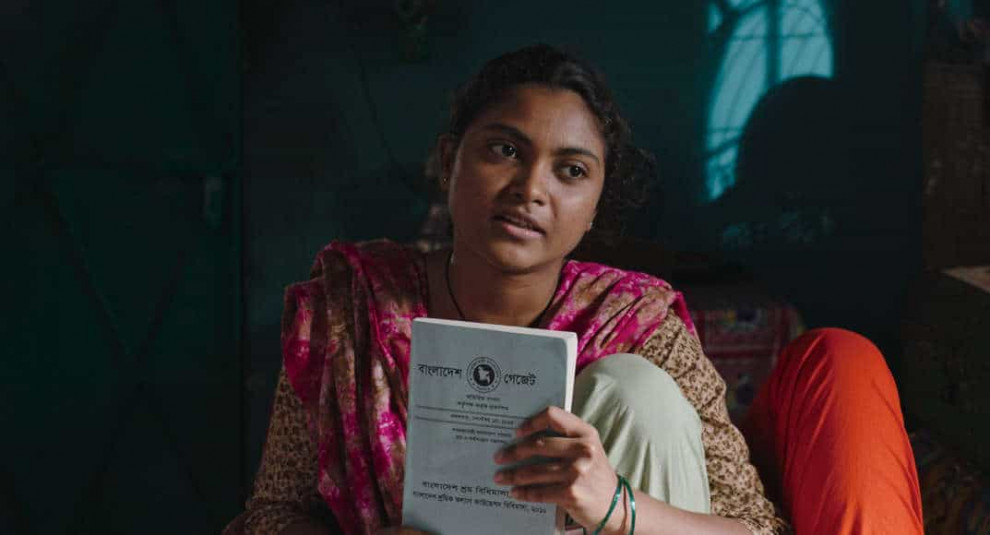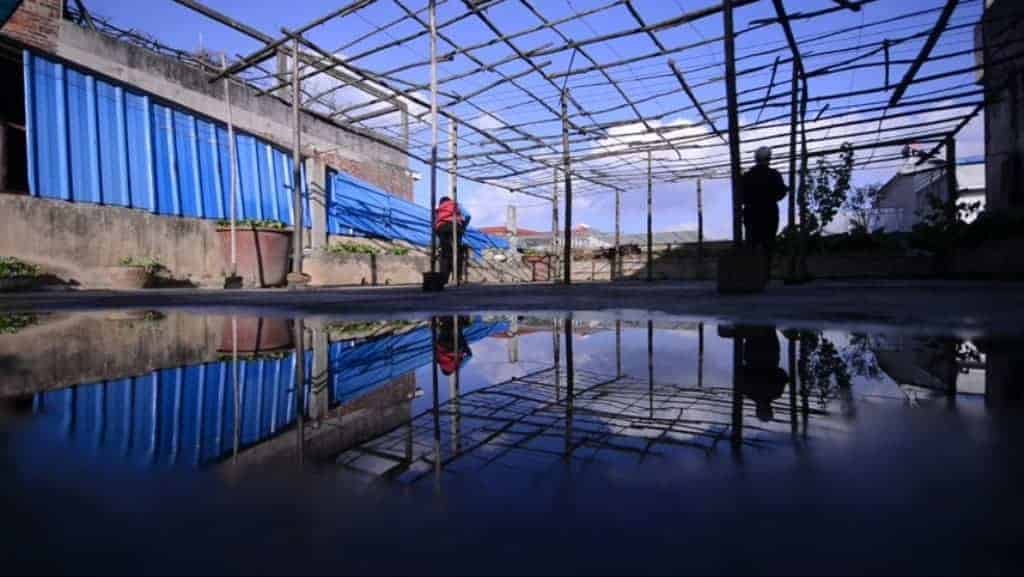Bangladesh nowadays is one of the world's fastest growing economies, a development fueled by the garment industry and the increased role women play in the professional sector. Underneath this progress, however, a number of issues are lurking still, particularly regarding the role of working women. Rubaiyat Hossain, who has previously worked for women's rights NGOs in Bangladesh presents these issues in the most eloquent manner, in her third feature effort.
“Made in Bangladesh” is screening at Osaka Asian Film Festival

The movie revolves around Shimu, a 23-old-year woman working in one of the export-oriented garment factories, in essence a sweat-shop that has her producing up to 1500 shirts per day for minimal pay. Shimu is married to Reza, a man who is unemployed, but despite these two issues, she is considered successful by many other women, who are unemployed or unmarried, or even both. This “bubble” bursts quite abruptly, when a fire in the factory ends up with one of her fellow workers dead, and the administration not giving a dime about the fact. Soon Shimu meets an activist journalist who then introduces her and her fellow women workers to Nasima Apa, a local union organizer. These two meetings have a huge impact on Shimu who decides to unionize the factory. Her decision, however, is met with resistance by every front.
Rubaiyat Hossain, who also wrote the script, has made a number of very smart choices regarding the presentation of the film, starting with the quite eloquent title. Furthermore, the fact that she presents Shimu as a happy woman who decides to bring a change because she thinks it is the right thing to, allows her to avoid the reef of the misery porn that the movie could easily turn into. This tactic continues in the visual department, with Sabine Lancelin's cinematography portraying the claustrophobic environments of the factory and Shimu's house in the bleakest color on the one hand, but juxtaposing them with the brightness of the women's shawls, in an antithesis that works both contextually and aesthetically. The scene where the women are dancing is the highlight of this tendency.

The docudrama aesthetics also work quite well for the film, with Hossain presenting the issue with realism, while her almost Kafkaesque effort to simply register the union provides one of the pointiest remark about the way the system in Bangladesh works, as much as about the patriarchy and the conservatism that dominate its society. The rather fast pace implemented by Sujan Mahmud and Raphaelle Martin-Holger's editing allows Hossain to present all the aforementioned comments thoroughly, without any kind of delay, in just 95 minutes, a tactic that works quite well for the entertainment the film offers.
The whole approach, however, and particularly a number of on-the-nose dialogues, along with the concept of Shimu's co-worker having a romantic relationship with their supervisor, point mostly towards a TV-drama than a movie, despite the fact that this last aspect is used to show how society reacts to adultery. The acting also follows this path, to a point at least, with the interaction among the women sometimes looking a bit too “fixed”, although this part changes completely when they deal with their higher-ups in the factory or the public sector. Rikita Nandini Shimu as Shimu encapsulates both these aspects, although her acting during the final clashes is quite convincing.
“Made in Bangladesh” includes some faults that dull the impact of its main theme somewhat; however, it remains quite a worthy effort that succeeds in highlighting a number of very important aspects of Bangladesh's current society, and thus, a quite significant film.















